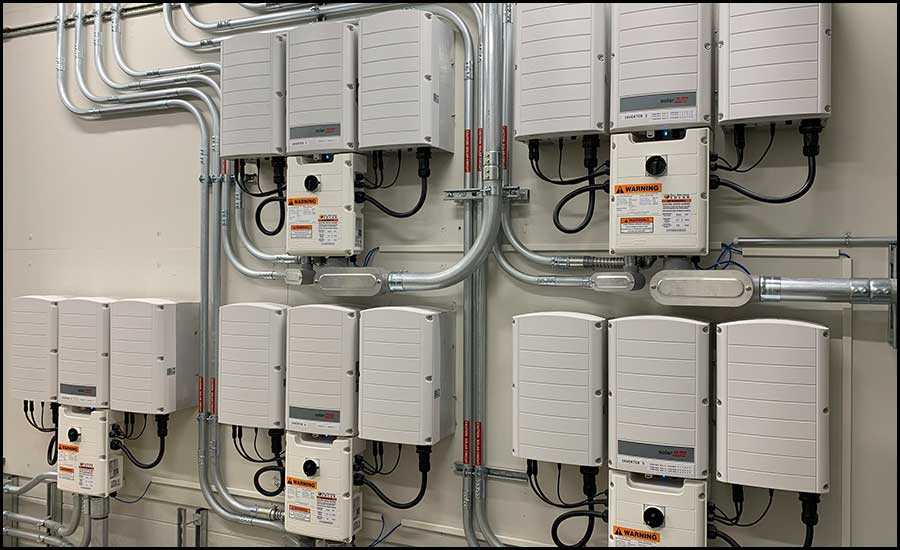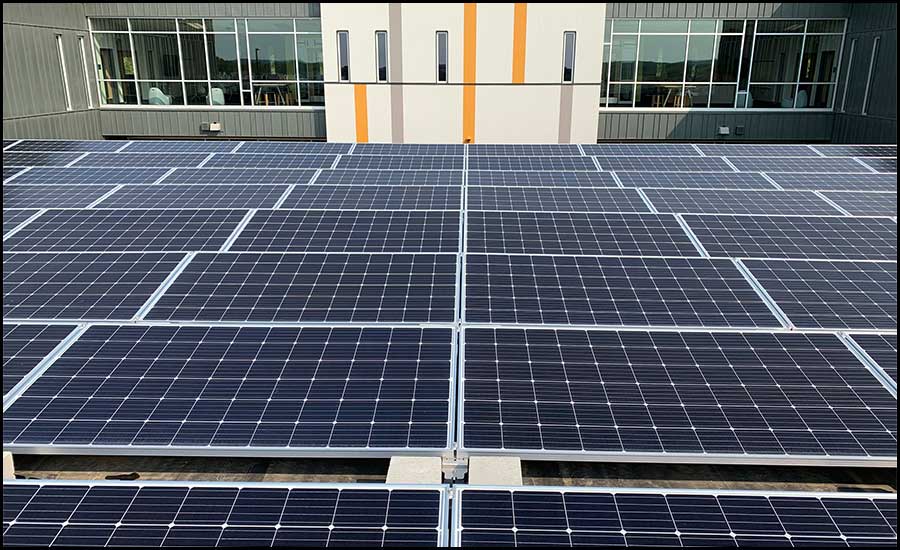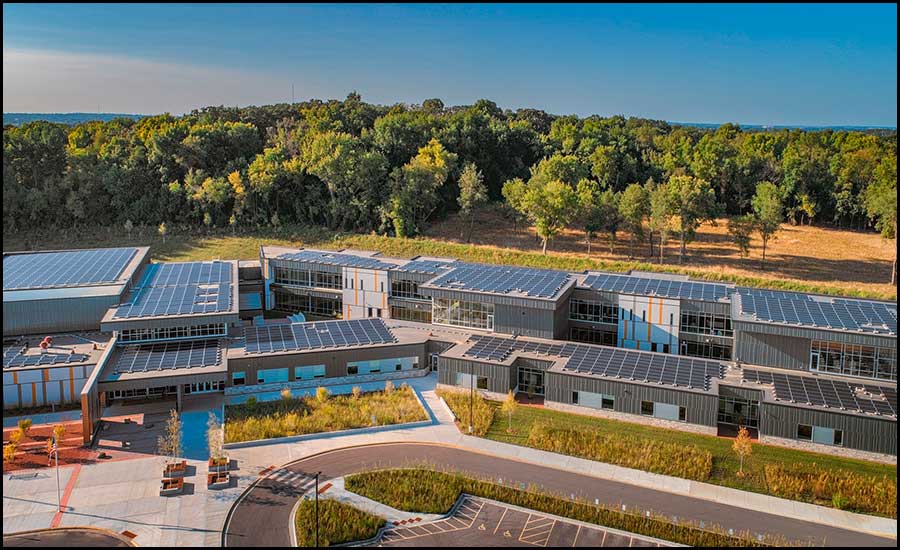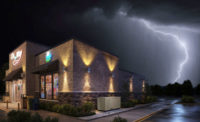Since the passage of the Inflation Reduction Act (IRA) in 2022, the building and design industry has been parsing out the legislation’s various tools and tax incentives that are newly available to building professionals who wish to apply strategic, high-performance planning to their projects. There is a lot of information in there, and it can be daunting trying to reconcile how to be a better steward of the environment while knowing exactly how to leverage that stewardship into tax credits and deductions.
Of note, the IRA’s changes to Section 48 of the Internal Revenue Code (Investment Tax Credit for Energy Property) and Section 179D (Energy Efficient Commercial Building Deduction) are the subjects at hand. The first provides a credit that reduces one’s tax bill (or direct payment for nonprofits) for investing in renewable energy projects. The second provides a deduction that reduces one’s taxable income when making certain energy efficiency improvements to commercial buildings, including interior lighting, HVAC, and building envelope.

Designing building systems with these incentives in mind can help decarbonize large sectors of the built environment, with the goal of achieving zero net energy and/or zero net carbon performance, as outlined in ASHRAE Standard 228 - Standard Method of Evaluating Zero Net Energy and Zero Net Carbon Building Performance. The standard establishes evaluation requirements for operational energy and carbon reductions. It can also help save on project costs, both upfront and over time.
Decarbonize and Save
Through the IRA revisions to the tax code, investment tax credits have expanded to include tax-exempt, nonprofit entities in addition to developers and other tax-paying entities who opt to install ground-source heat pumps, aka geothermal systems. These perform the same role as a boiler for a central heating system but are electric-powered and use heat from the ground rather than burning fuel to generate heat. What geothermal includes is not yet defined in the legislation but will likely include entire HVAC systems plus other energy efficiency measures, like heat recovery, demand control ventilation, and variable frequency drives (VFDs) as long as they are part of a geothermal system.
On projects that start construction of a geothermal or ground-source heat pump before Jan. 1, 2035 (gradually phases out starting in 2033), tax credits can be applied for whole mechanical systems, with a base investment credit of 6%, potentially rising to 50% with bonus provisions. All systems except biogas systems qualify for the credit through 2035 (most roll over from 48c to 48e in 2025). Biogas has a sunset date of Dec. 31, 2024.
Credits are available for technologies, such as fuel cell, small wind, microgrid controllers, biogas, energy storage, and solar; this extends to equipment that uses solar energy to generate electricity, heat and cool buildings, heat water, provide process heat, and/or illuminate interiors through electrochromic glass (aka smart glass) or similar means. The investment credits enable developers to fast-track construction schedules, accelerate retrofits and equipment replacement projects at reduced costs, and access “green” bonds with greater ease and at lower rates.

Tax deductions are likewise available for energy efficiency improvements made to commercial buildings. This extends to interior lighting, HVAC, hot water, and building envelope systems. The base credit amount is between 50 cents and $1 per square foot, depending on the increase in efficiency. Deductions can be up to $5 per square foot if the building is more than 50% more efficient than ASHRAE Standard 90.1-2007. This is up to three times more than 179D was previously. Unlike the tax credits outlined in Section 48, energy efficiency tax deductions are permanent and available to both owners/long-term lessees and building designers. The baseline standard in this context is at first ASHRAE 90.1-2007 and will progress to later (stricter) revisions with time. ASHRAE 90.1 is widely adapted in commercial building energy codes but is only the minimum when it comes to energy efficiency.
Deductions aside, building efficiency upgrades that reduce (or eliminate) the use of fossil fuels — either directly on-site (scope 1) or indirectly through the electric grid (scope 2) — should be considered in tandem with regional sources of electricity and what powers the grid (e.g., coal, nuclear natural gas, hydropower, wind, solar, etc.), along with what steps are being taken to transition the grid to renewables. It should be noted that it is not necessary to eliminate all scope 1 emissions to become zero net carbon, according to ASHRAE Standard 228.
Making renewables more cost-effective
With new projects and renovations alike, upfront costs for renewable systems and efficiency upgrades will always be a concern. However, once applicable credits and deductions are factored in, the initial costs associated with traditional systems can be higher. Leveraging tax incentives through the IRA requires planning from the start of the project.

In the Village of McFarland, Wisconsin, the 57,000-square-foot Public Safety Center is the first facility of its kind to comply with the zero-energy standard. As a result, owing to the site’s 51 geothermal wells and 420-kW solar array, it qualified for both tax credits and deductions. With the new IRA direct pay structure for the Investment Tax Credit (ITC), projected payback was reduced from over 16 years to just one year.
The second hypothetical concerns Forest Edge Elementary School in Fitchburg, Wisconsin, the first net-zero energy school in the state. Due to its energy efficiency, the 126,000-square-foot school, which completed its annual performance cycle in 2021, could easily qualify for a $635,000 179d tax deduction if it was completed in 2023. That equates to a federal tax savings of $133,350, based on a 21% marginal tax rate.
In Retrospect
The opportunities for savings using green bonds, credits for renewables, and deductions for implementing efficiency strategies are far-reaching. But, it will take time for developers and buildings owners to understand and place trust in this new investment strategy.
A useful strategy for understanding the benefits of these incentives is to apply them retroactively to existing projects, while adjusting for inflation. Looking at past projects, it’s worth postulating how “X” could be gained and “Y” could be saved had IRA incentives been previously available.
Fortunately, this exercise isn’t hypothetical. Real calculations can be applied and, if feasible, system retrofits and upgrades can be implemented on existing buildings, making them eligible for tax deductions. And, this need not only apply to existing high-performance buildings, such as Forest Edge Elementary.
If existing buildings can be gradually retrofitted to perform at a higher standard and tax savings can be achieved in the process, the cumulative savings and environmental benefit from leveraging the IRA for new projects going forward will be something worth celebrating.







